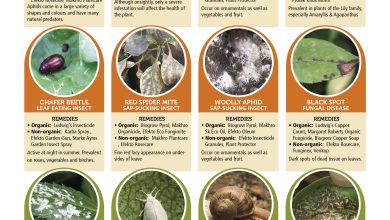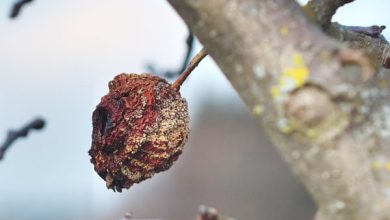Tagete: [Cultivation, Care, Irrigation and Reproduction]

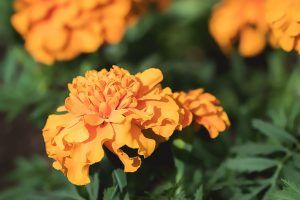 Tagete is a plant that emits a spectacular bloom in yellow and orange colors in the spring of each year.
Tagete is a plant that emits a spectacular bloom in yellow and orange colors in the spring of each year.
These flowers give off a characteristic aroma that is pleasant to the nose, so it is not only a visual treat.
As it is an annual species, it will be possible for you to put together your composition as you like at the beginning of the spring season.
All these are good details, but then we will study it in depth and we cannot help but invite you to join us on this tour, would you like it?
Important points when planting a tagete:
- When? In summer or autumn.
- Where? Full sun.
- How do we prepare the land? Adding enough organic matter so that the soil has a spongy consistency.
- How should we water? With localized irrigation, either drip or with a shower.
- How often do you have to water? Up to 3 times a week while it is in flowering season, reducing in the rest of the cycle.
- What care do you need? Pruning of flowers that have dried, liquid fertilization every 15 days during flowering time,
- What pests and diseases does it have? Among the most common are the red spider, the caterpillars, the thrips, the white fly and the leafminer.
What is the Moorish carnation or tagete?
The tagete is also known as the Moorish carnation, the Indian carnation or the Chinese carnation. It is an annual species of ornamental type that is capable of decorating the environment in which it is planted with yellow and orange blooms.
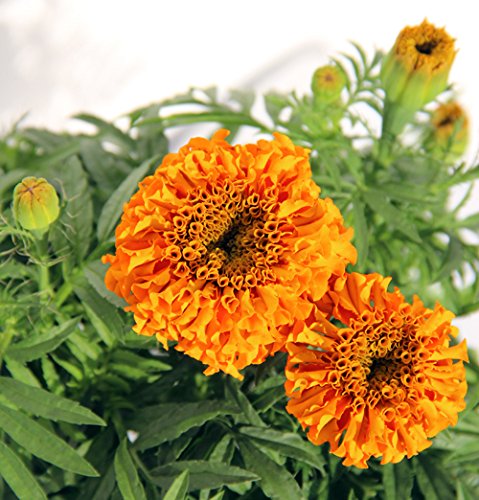
The reason for their showy blooms can be seen by knowing that they belong to the same family as daisies. In total, it brings together about 60 species, some of which give bicolor flowers that are highly valued.
What characteristics do marigolds have?
When dealing with marigolds, it is worth knowing the following characteristics:
- They need to be located in full sunlight, preferably. In certain cases they could tolerate semi-shade but ensuring that most of the day they receive sunlight.
- It offers blooms of yellow, orange or bicolor colors, for example showing a yellow flower with orange petal tips.
- It is able to adapt to indoors or outdoors but needs frequent sunlight to stay healthy.
- Its roots have ideal components to prevent the appearance of certain types of pests, such as nematodes, and even the attack of ants.
When are tagetes planted?
 Marigolds are usually planted in the summer to ensure a beautiful bloom in the spring of the following year. However, they also accept a more or less late sowing in the fall.
Marigolds are usually planted in the summer to ensure a beautiful bloom in the spring of the following year. However, they also accept a more or less late sowing in the fall.
It must be ensured that the land used for the plantation is in good condition, as they need organic matter to nourish themselves.
When do marigolds bloom?
The marigolds bloom between spring and summer, depending on the date in which their seeds have been sown. There are very specific spaces, where winters are mild, in which flowering can even occur at the end of winter.
How long do marigolds last?
The period of life of the tagetes is annual.This means that to enjoy its flowering, a new cycle of seeds must be sown every year.
How to take care of marigolds?
Tagetes can be planted both in the garden and in pots without any inconvenience. They are even very useful to be worked together with horticultural plants, as in the case of tomato plants.
The latter is due to the fact that they have substances in their roots that allow them to drive away ants and some nematodes. As for flowering, it will be more effective if you remove the flowers that dry up as it happens.
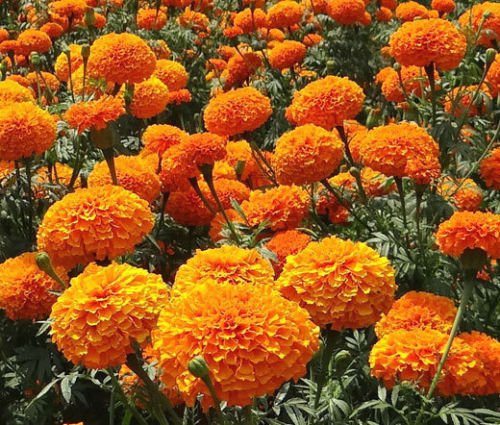
Thanks to the fact that you will reduce your energy expenditure on this matter, you will have a better chance of offering abundant flowering during the same cycle. The marigolds need to be fertilized to get flowers with better characteristics and in greater quantity.
Based on this, it is advisable to apply liquid fertilizers that have been created especially for flowering plants. Ideally, this fertilizer should be included in the irrigation water every 15 days during flowering time.
How should we water the tagete?
The tagete needs frequent watering to help its roots stay hydrated, since they are not capable of retaining water for long. Based on this, it is advisable to apply up to three irrigations per week, especially in the flowering season, which is when they are most demanding.
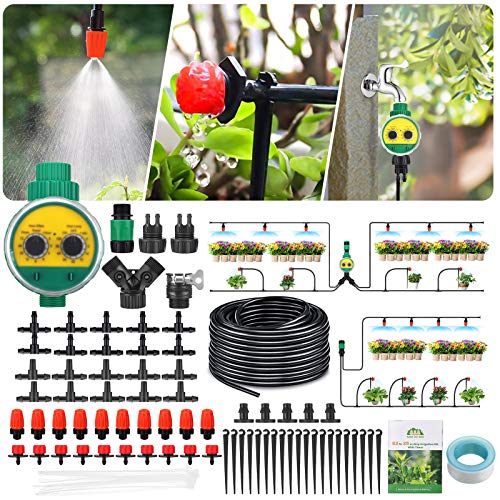
The appropriate method is by dripping, but if you have them in pots you could also take advantage of the watering can. The important thing is that it is a localized irrigation.
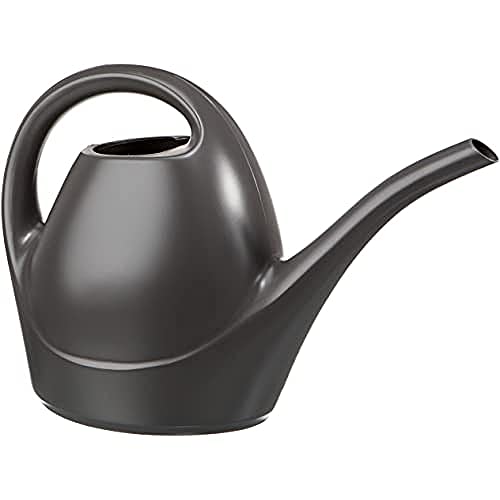
Care must be taken not to water the flowers to prevent excess moisture from creating an environment conducive to the development of fungi and diseases.
How does marigold reproduce?
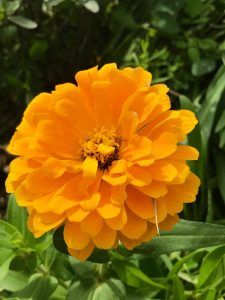 The tagete reproduces by means of seeds that are collected directly from its flowers.These can be planted in a seedbed to promote the seedling to be born and develop healthy from the initial phase.
The tagete reproduces by means of seeds that are collected directly from its flowers.These can be planted in a seedbed to promote the seedling to be born and develop healthy from the initial phase.
Afterwards, you can transfer it to a pot so that it reaches a considerable texture before transplanting it to the garden.
Note that marigolds can also be kept in pots, ensuring they have enough space for the roots to move.
Tagetes are very common in Mexico, as it is the characteristic flower used for the Day of the Dead celebration. Being a very low maintenance species, it is useful to decorate any space in the house, especially outdoors.
One of the most striking details of the tagete is that you can have it indoors and enjoy a flowering and then transplant it outdoors so that it continues active for a longer time.
To achieve this goal, it is important that you adapt it from the inside, always taking the pot outside so that it receives direct sunlight for longer. The marigolds are plants that you can get a lot out of, it’s just a matter of getting informed and making the best decisions.
Bibliographic references
- The association of crops is another strategy for disease management, particularly with Tagetes spp, O Gómez-Rodríguez, E Zavaleta-Mejía – Rev. Mex. Phytopathol, 2001 – researchgate.net
- Antifungal properties in species of the genus Tagetes, JS Barajas Pérez, R Montes-Belmont… – Revista mexicana de…, 2011 – scielo.org.mx
- The cultivation of cempasúchil (Tajetes erecta L.) as an alternative for the Region of San Juan de LLanos, municipality of San Felipe, Gto. , E Michel Ramírez – 1988 – sidalc.net
- MANAGEMENT OF FOLIAR DISEASES WITH Trichoderma spp. AND Bacillus subtilis IN CEMPASÚCHIL (Tagetes erecta) FROM THE TOLUCA VALLEY, C VÁZQUEZ MORENO – 2016 – ri.uaemex.mx
- Preliminary studies for the establishment of Tagetes lucida Cav. , L Acosta de la Luz, I Hechevarría Sosa… – Cuban Magazine of…, 2010 – scielo.sld.cu


![Photo of Senderuelas: [Care, Planting, Types, Irrigation, Substrate and More!]](https://www.complete-gardening.com/wp-content/uploads/2022/08/senderuelas-care-planting-types-irrigation-substrate-and-more-390x220.jpg)
